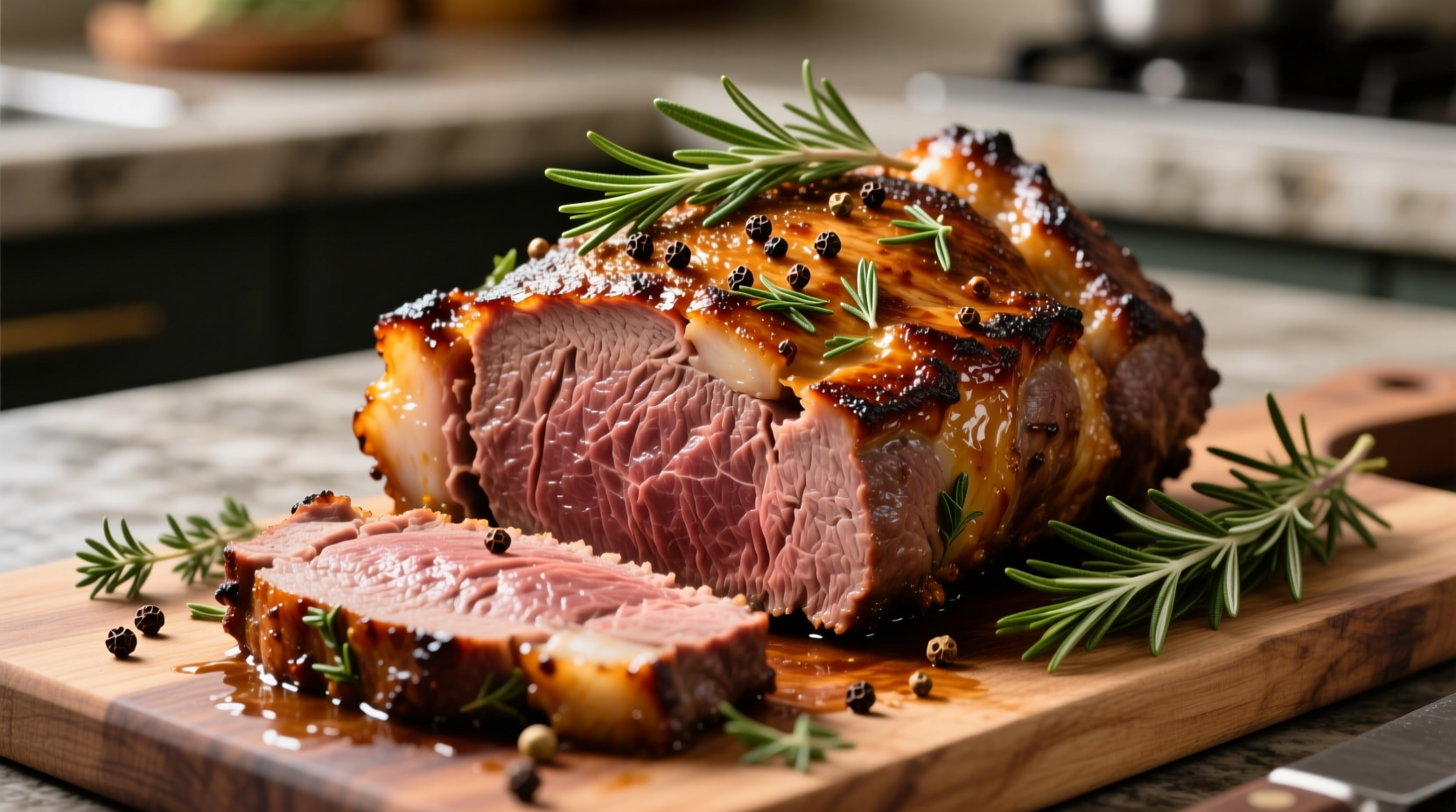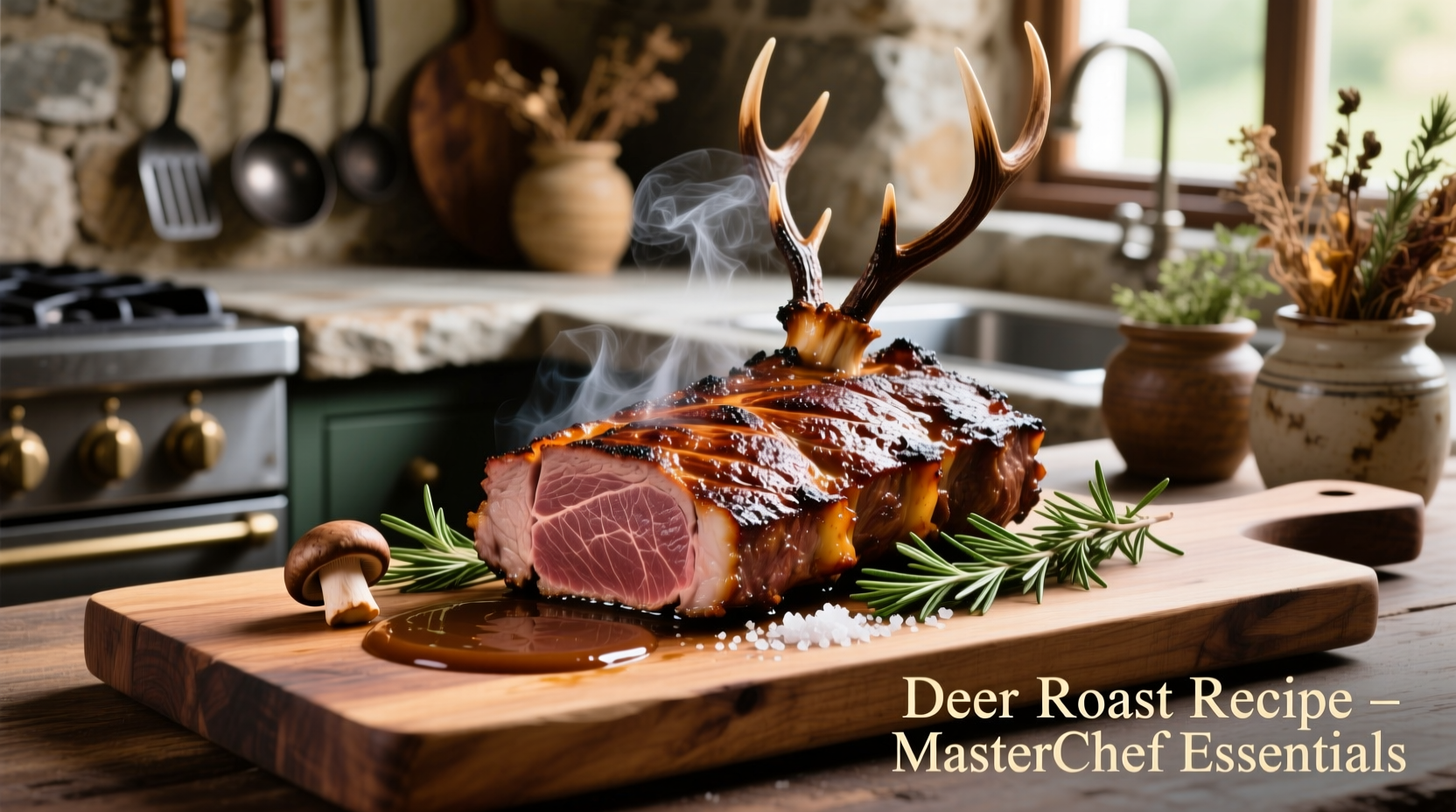The perfect deer roast requires proper preparation, precise temperature control (130-135°F internal for medium-rare), and adequate resting time (15-20 minutes). Key steps include trimming silver skin, using acidic marinades, slow roasting at 275°F, and slicing against the grain to ensure tender, flavorful results without gamey taste.
Mastering Venison Roast: From Field to Feast
Cooking deer roast properly transforms potentially tough, gamey meat into a succulent centerpiece. Unlike beef, venison has less fat and connective tissue, demanding specific techniques to achieve restaurant-quality results at home. This guide walks you through every critical step based on culinary science and professional chef methods.Understanding Your Venison Before Cooking
The quality of your deer roast begins long before it hits the pan. Proper field dressing and aging significantly impact final texture and flavor:| Aging Method | Temperature Range | Duration | Flavor Impact |
|---|---|---|---|
| Wet Aging (Vacuum) | 32-34°F | 7-14 days | Mild tenderness improvement |
| Dry Aging | 34-36°F, 85% humidity | 14-21 days | Enhanced depth, nutty notes |
| No Aging | Refrigerated | Immediate cooking | Stronger game flavor |
Essential Preparation Steps You Can't Skip
Trimming technique matters more than you think: Remove all silver skin (the tough, translucent membrane) using a sharp boning knife at a 30-degree angle. This connective tissue doesn't melt during cooking and causes chewiness. Professional chefs recommend working under cold running water to maintain visibility of the membrane. Acidic marinades transform texture: Combine 1 cup buttermilk or ½ cup red wine vinegar with herbs and spices. The USDA Food Safety and Inspection Service confirms that acidic components help break down muscle fibers in lean game meats. Marinate for 12-24 hours in the refrigerator, never at room temperature.
Precision Cooking Methods for Tender Results
Low and slow oven roasting (best for beginners):- Preheat oven to 275°F (135°C)
- Sear roast on all sides in hot cast iron (90 seconds per side)
- Insert meat thermometer into thickest part
- Roast until internal temperature reaches 120°F (49°C)
- Remove from oven and tent with foil
- Rest 15-20 minutes (temperature will rise to 130-135°F)
- Rare: 120-125°F (cut immediately after resting)
- Medium-rare: 130-135°F (ideal for most palates)
- Medium: 140-145°F (beginning of dryness)
- Above 150°F: Not recommended (excessive dryness)
Troubleshooting Common Deer Roast Problems
Problem: Dry, tough meat- Solution: Brine with ¼ cup salt + ¼ cup sugar per quart water for 4-6 hours before cooking
- Alternative: Baste with bacon fat during roasting
- Solution: Soak in milk or buttermilk for 12 hours before marinating
- Alternative: Use juniper berries, red wine, or bacon in your marinade
- Solution: Tie roast with kitchen twine at 1.5-inch intervals for even shape
- Alternative: Use a sous vide at 130°F for 4 hours before searing
Resting and Slicing: The Final Critical Steps
Never skip the resting period—this allows juices to redistribute throughout the meat. During cooking, juices migrate toward the center; resting lets them reabsorb. For best results:- Tent loosely with foil (never seal tightly)
- Rest 15 minutes for roasts under 3 pounds
- Rest 20 minutes for roasts 3-5 pounds
- Rest 25 minutes for roasts over 5 pounds
Leftover Venison: Storage and Creative Uses
Proper storage maintains quality for future meals:- Refrigerate within 2 hours of cooking
- Store in airtight container with some cooking juices
- Consume within 3-4 days for best quality
- Freeze in vacuum-sealed bags for up to 9 months
- Venison hash with potatoes and onions
- Asian-inspired venison stir-fry with ginger
- Venison tacos with blue corn tortillas
- Venison pot pie with flaky crust











 浙公网安备
33010002000092号
浙公网安备
33010002000092号 浙B2-20120091-4
浙B2-20120091-4